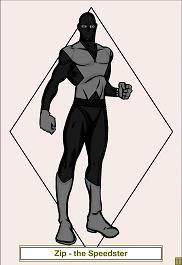One Bad Apple Can Spoil a Campaign
Back in early 2003, I started up a new D&D campaign with all new (to each other) group. I had left my previous game group because of play style differences, and decided to get a new group together. (My separation from the previous group was amiable. I didn’t tell them how badly their style was driving me up the wall — that story is for another post.) I found four players and gave them the ground rules for creating characters for my campaign.
I had in mind an epic campaign to cover levels 1 to 20, and possibly beyond. They were allowed any race and class in the Player’s Handbook. After the first game session, they would be allowed access to any material (feats, classes, items, etc.) from any of the basic expansions. This was the time of D&D “3.0”, so the basic expansions included the five core class books (Sword & Fist, etc.). They could create their characters using the point buy method, with 28 points. I also asked that everyone create a heroic character — no neutral or evil alignments, no anti-heroes, no borderline personalities. Their characters were to be true heroes. (They would be saving the world, essentially, but I hadn’t told them that yet.)
Three of the players took this just fine, and made their characters accordingly, with no fuss. But one player couldn’t be bound by such rules. First he said that 28 points was just too few to make a heroic character. He suggested 40 points. Forty points! I had never even heard such a number for the point buy method. I turned down the suggestion.
Then he wanted to know if he could make a character out of the Psionic’s Handbook. “No. Please stick to the core Player’s Handbook.”
Then he wanted to know if he could work his character toward a particular prestige class he found on the Web. I immediately said no to the class, and redirected him to the core books and the five expansion books. Then, out of curiosity, I went on the Web and looked at that prestige class he asked about. It was based around service to a “dark queen” of the forest. A definite non-hero type character class.
Then he finally settled on the cleric class. Thank goodness, something right out of the core book. He asked if he could be a priest of a specific god not in the core books. I wanted to immediately shout “No!” But I decided to take a look at the god he wanted. It was a thieving, back stabbing god of Chaotic Evil alignment. What part of “heroic character” was he not understanding. I told him no because the god was Chaotic Evil. He said, “Oh, I thought he was Chaotic Neutral.” I responded with, “And that would still be outside the guidelines I gave everyone.” But through more conversation, I did end up letting him have Fharlanghn, a Neutral god, as his character’s patron.
I should have realized this player was just going to be a continuous problem for my game. He felt his creativity and his character was restricted and gimped by my guidelines. I didn’t think my guidelines were restrictive; in fact, I was allowing 5 extra books into the game beyond the core rules. 28 points for point buy was 3 points over the baseline, and was the general rule for RPGA organized play. My only actual restriction was asking for only characters of Good alignment. None of the other players had any problems with my guidelines, so I didn’t think it was me that was causing a problem.
Eventually, we all got together for the first game session. I thought this player had finally come around to understanding and accepting my character creation rules, but I came to learn that my troubles were only starting.
I had decided to start this campaign off in media res. I figured it would help get this new group working together quickly. So I opened the first game session with a small battle. Once we rolled initiative, the cleric player (the troublesome player) announced that he didn’t have his spells ready. I’ve never seen a player with a spell-casting character that didn’t at least have something written down for his spell list; at the very least they had an idea of what they would commonly use.
Well, we waited ten minutes for the player to go through the book and find the spells he wanted to have prepared. The character was only first level, he only had five or six spells to choose, but he took his time. And I gave him time; I didn’t want to antagonize him and possibly make things worse. At last, he had his spell list ready.
We picked up the fight again. The cleric player made his first attack (ironic that he didn’t use a spell we just wasted ten minutes for him to pick out) with a whip-dagger. Whoa! A whip-dagger is not in the Player’s Handbook. It’s in one of the expansion books that I said they could use stuff out of after the game starts. “But the standard whip is weak,” was his explanation. So for this he decided to not bother me with asking for permission before breaking the guidelines. I made him lose the whip-dagger, and he chose to take the standard whip.
So he chose to not make a whip attack. Instead he chose to cast a spell: summon monster I. Oh no. This problem was completely my creation and my fault.
The campaign concept I came up with was:
Several years ago, giant gates to Hell and the Abyss had been opened known evil realms in the World of Greyhawk campaign setting. These gates had manifested a “Hell on earth” environment in the world, and the boundaries were expanding. I was starting the campaign within the boundary of the Abyssal “gatelands”. This had several effects on the world, but the only effects that would affect magic spells was that summon monster spells could only summon fiendish creatures. This was a flavor thing that seemed to flow naturally from the setting arrangement — the influence of the evil planes restricted/cut off the good planes.
I had not told the Players the set up or plot of the campaign beforehand. I wanted to reveal it in the first game session. I had this hope that everyone would go, “Whoa! Very cool plot,” when they learned it. I didn’t think they would need to know the details or minor changes, like summon monster spells, for making their 1st-level characters. I had never, in my 20+ years of D&D, ever seen anyone take summon monster spell at 1st level — the spell only lasts one round at that level. It’s almost useless with such a short duration.
Oh well, I thought the Player could just change that one spell choice to something else and we could continue with the game. But no, it couldn’t be that easy. First, the Player tried to convince me that he should be able to summon a fiendish creature. Of course, by the rules (not to mention common sense) a Good cleric cannot use Evil spells. “But if I’m using the creature for a Good purpose. . .” Eventually, he gave in.
But, it turns out that the Player had created this character as an “animal tamer.” He wanted to summon creatures and use his whip to attack enemies. Of course he never told me any of this until this moment. We’d had two weeks between our introductions and the first game session. He sent me several mails asking about other stuff, but he never mentioned his actual, finalized character idea. So, here, at last, he could point to a problem with his character that was my fault for not telling him about a campaign effect ahead of time.
We eventually got past this problem, but the self-destruct button had been pressed. All that was left till the death of this campaign was the silent countdown. And I was too stupid to recognize it.
At the time we were playing the game, I was writing the game up as a story, exactly as it happened. The campaign lasted two game sessions. You can read the story here:
The Fiendish Oerth – a D&D campaign story
Bullgrit
bullgrit@totalbullgrit.com






 Categories:
Categories: 


 Zachery “Zip” Harrison
Zachery “Zip” Harrison


